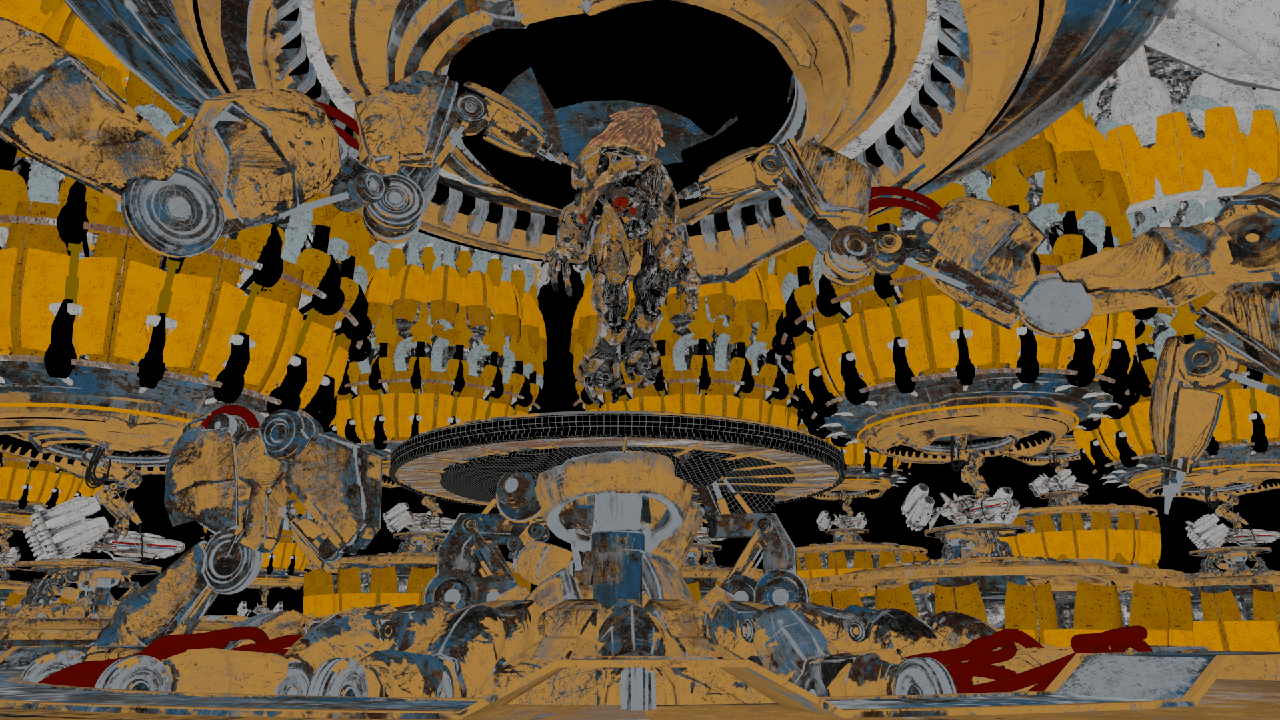This page describes the Diffuse Render Element and how it is used to have more control of a final composited image.
Overview
The Diffuse Render Element shows the colors and textures used in materials, flatly applied to objects with no lighting information. The colors are the actual colors set in the material definition, and each texture appears as it does in the texture (file) itself. There are no highlights or shadows, and any background image is not included.
Other render elements that include colors from materials are said to include the diffuse contribution or the diffuse component of the rendered scene. The Diffuse Render Element contributes this diffuse component; any render element that includes this diffuse component is a combination of vrayRE_Diffuse and other render element(s).
Note that the Diffuse Filter Render Element is affected by reflection and refraction combined weight. 1
This render element is, by itself, useful for making overall adjustments and enhancements to base colors and textures during compositing without effecting things like reflections and highlights.
Attributes
Enabled – When enabled, the render element appears in the V-Ray Virtual Frame Buffer.
Deep output – Specifies whether to include this render element in deep images.
Filename suffix – The text added to the end of the rendered file, when saved as a separate file (e.g. myrender.diffuse.vrimg).
Denoise – Enables the render element's denoising, if Denoiser render element is present.
Common Uses
The Diffuse Render Element is useful for changing the appearance of many passes when it is combined with Raw render passes (like Raw GI, Raw Light, etc.). In the example below, the Diffuse is multiplied by the Raw Global Illumination Render Element to provide the Global Illumination pass. In this way, color correction can be performed upon the raw pass without the actual diffuse colors being changed, making it possible to tint a pass in a realistic way without re-rendering.
The Diffuse is a very useful render element due to the number of raw passes with which it can be combined, giving the ability to manipulate many areas of the render at the composite level. The Diffuse pass can also be color-corrected on its own, as shown in the example below. In this case, a Multi Matte Render Element was used in conjunction with the Diffuse Render Element to isolate the center of the upper ring and change its color from yellow to green without also tinting its lighting or shadowing in any way.
Diffuse Render Element
A matte for the center upper ring created using a V-ray Multimatte render element
Diffuse Render Element
with color correction on the center of the upper ring
Beauty Render Element
Resulting composite with Diffuse Render Element
with color correction on the center of the upper ring
Underlying Compositing Formulas
vrayRE_Diffuse x vrayRE_RawGI = GI
vrayRE_Diffuse x vrayRE_Raw_Light = Lighting
vrayRE_Diffuse x Raw Shadow = Shadow
Notes
1 - This means that reflective objects with solid diffuse color appear differently according to the view angle. The actual diffuse color is displayed only if the VRayRawDiffuse Render Element is used.









